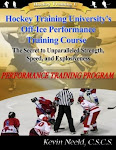
This section of the site covers triathlon training for beginners to advanced competitors over the various race distances.
Triathletes (or aspiring triathletes) at any level are typically serious trainers. Clocking up dozens, even hundreds of kilometres in the pool and on the road each week takes a hefty commitment. It makes sense that with such an outlay of time and energy that training should be as effective and as efficient as possible. And with a sport like this, it requires some careful, upfront planning...
Aside from the obvious intensity, frequency and duration of swimming, cycling and running training sessions, a triathlete must also consider:
• Movement economy and technique training
• The correct type of strength training
• Periodization of the annual plan
• Injury prevention and recovery strategies
• Tapering and race preparation
• Pre and post workout nutrition
Even novice triathletes can benefit from adopting some of the training techniques used by elite competitors. And on closer examination of the top performers it is clear that success consists of far more than just pounding out the miles.
It seems obvious that triathletes must posses extraordinary aerobic endurance. Despite this however, studies have found a poor relationship between VO2max and both long distance running and triathlon performance. While there is a definite correlation between aerobic power and elite endurance performance it seems that additional factors are important for success. Such as?
Variables measured at sub-maximal exercise intensity including - lactate threshold, velocity at lactate threshold, substrate or energy availability and particularly economy of motion may be more important during prolonged competition.
In terms of a triathlon training program this has important implications. Many endurance athletes favor heavy volume and relatively low intensity training (below lactate threshold). However, reducing volume and incorporating some shorter, more intense sessions at or above lactate threshold could improve endurance performance and help to prevent long-term injury.
Strength training, prescribed correctly, can also improve endurance performance. While traditionally any form of weight lifting was frowned upon by endurance coaches, low-weight, high-repetition routines have become generally accepted by triathletes in order to improve strength endurance and limit an increase in bodyweight. However, maximal and explosive type strength training has been shown to improve endurance performance and exercise economy and is not associated with a signifcant increase in muscle mass.
The articles below cover the elements and principles of conditioning important in a triathlon training plan. Amongst them, you will find plenty of sample training sessions and plans - all evidence-based and written by experienced triathlon coaches.























No comments:
Post a Comment